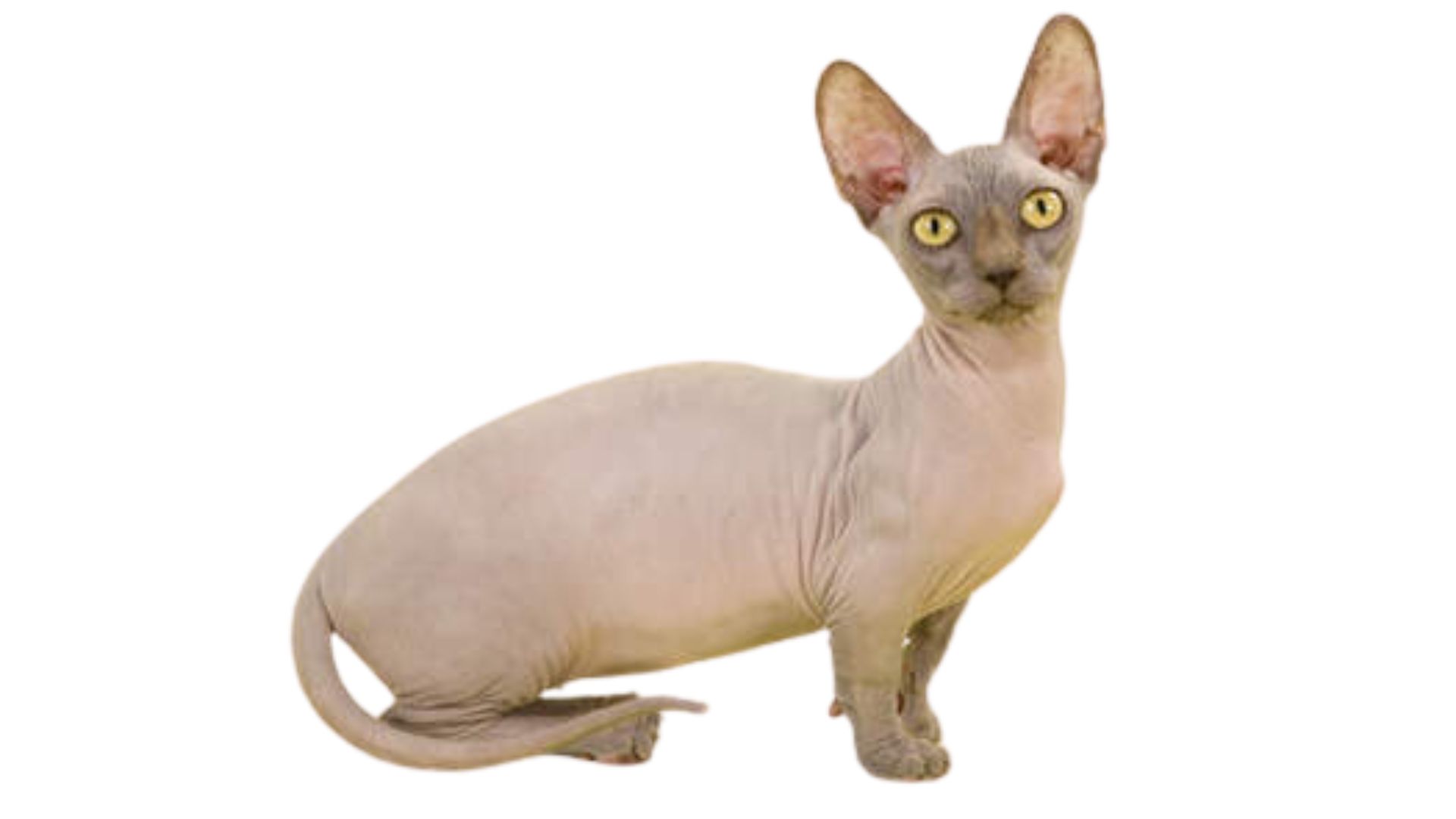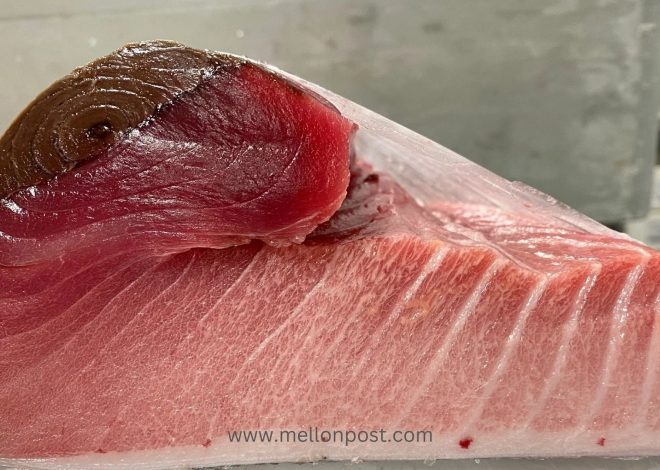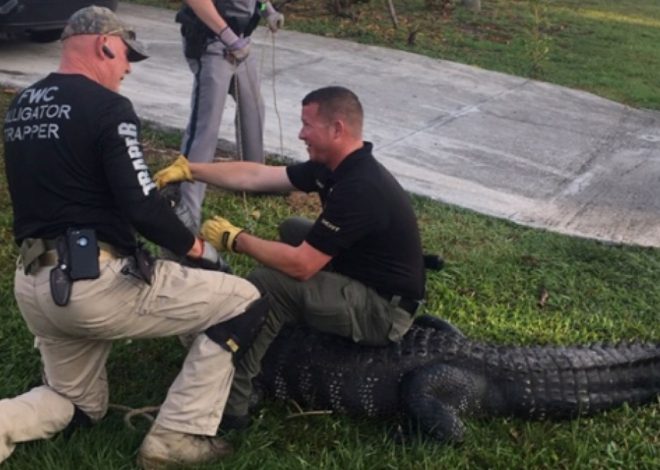
Bambino cat
Table of Contents
Origins and Breed Recognition
The Bambino is a relatively new cat breed, created by crossing the Sphynx (hairless) and Munchkin (short-legged) breeds. The breed was first introduced in 2005 by breeders Stephanie and Pat Osborne in Arkansas.
The International Cat Association (TICA) recognized the Bambino as an “experimental” breed in 2006, but major registries like the CFA and ACFA do not recognize it due to concerns over the breed’s health.
Physical Characteristics
Bambinos have the general appearance of a Sphynx, but with the short legs inherited from the Munchkin breed. They are small to medium-sized cats, typically weighing 5-9 lbs and reaching up to 17 inches in length. Bambinos have a hairless or very short, peach fuzz-like coat, and large, expressive eyes and ears.
Temperament and Personality
Bambinos are described as affectionate, playful, active, and social cats that enjoy human interaction. They are known to be friendly with children, other pets, and adapt well to apartment living. Bambinos can be vocal and may suffer from separation anxiety if left alone for too long.
Care and Health Concerns
Due to their hairless skin, Bambinos require regular bathing and moisturizing to prevent skin issues.
Their short legs and Sphynx heritage can lead to potential health problems like respiratory issues, dental disease, and skin cancer.
The breed’s genetic abnormalities are controversial, with some organizations discouraging their breeding and ownership.
What are the unique characteristics of bambino cats
The unique characteristics of Bambino cats include:
1. Short Legs: Bambinos have short, stubby legs inherited from the Munchkin breed. Despite their short stature, they are known to be agile and active.
2. Hairless Coat: Bambinos typically have a hairless or very short, peach fuzz-like coat, inherited from the Sphynx breed. This requires regular bathing and skin care to maintain their health.
3. Large Ears: Bambinos have large, expressive ears that are slightly rounded at the tips, adding to their distinctive appearance.
4. Elongated Body: Bambinos have an elongated, slender body shape, which combined with their short legs, gives them a unique and endearing look.
5. Expressive Eyes: Bambinos have large, captivating eyes that can be various colors like green, blue, or gold. Their eyes contribute to their overall charming and curious expression.
6. Rarity and Expense: As a relatively new and rare breed, Bambinos can be quite expensive, with prices ranging from $1,500 to $4,500.
7. High Energy and Playfulness: Bambinos are known to be highly active, energetic, and playful, often maintaining a kitten-like personality into adulthood.
8. Affectionate Temperament: Bambinos are described as affectionate, social, and loving towards their human companions, forming strong bonds.
Average lifespan of bambino cats
The average lifespan of Bambino cats is between 9 and 15 years, as indicated by the ASPCA and other sources . Proper care, regular grooming, and attention to their unique needs can help ensure that Bambino cats live a healthy and fulfilling life within this lifespan range.
Some ways to keep bambino cats healthy and active
Here are some key ways to help keep Bambino cats healthy and active:
1. Provide Regular Grooming:
- Bambinos require frequent bathing, at least once a week, to prevent skin issues due to their lack of fur.
- Use a mild, fragrance-free shampoo and gently wipe their skin between baths to remove oil buildup.
- Regularly trim their nails and clean their ears to maintain their hygiene.
2. Ensure Proper Nutrition:
- Feed a high-quality, balanced diet formulated for cats to meet their nutritional needs.
- Consult your veterinarian about the best diet and feeding schedule for your Bambino.
3. Encourage Physical Activity:
- Provide plenty of toys, climbing structures, and interactive playtime to keep Bambinos active and mentally stimulated.
- They enjoy playing fetch, chasing laser pointers, and other energetic activities.
- Consider getting a second pet, like another cat or dog, to keep your Bambino company and encourage play.
4. Protect from Environmental Factors:
- Limit sun exposure and use pet-safe sunscreen to prevent sunburn on their delicate skin.
- Keep them indoors to avoid environmental irritants that could cause skin or respiratory issues.
- Provide warm clothing or blankets during colder weather to prevent them from getting too cold.
5. Prioritize Veterinary Care:
- Schedule regular check-ups and preventive care to catch any health issues early.
- Be vigilant for signs of skin infections, dental problems, heart conditions, and other common Bambino health concerns.
- Work closely with your veterinarian to develop a proactive care plan for your Bambino.
By following these guidelines, you can help ensure your Bambino cat remains healthy, active, and thrives throughout their 12-14 year average lifespan.
Common health issues that bambino cats may face
Some common health issues that Bambino cats may face include:
1. Skin Problems:
- Due to their lack of fur and oily skin, Bambinos are more susceptible to bacterial and fungal skin infections, as well as sunburn.
- They require regular bathing and grooming to prevent skin issues.
2. Respiratory Issues:
- Bambinos may be prone to respiratory infections, especially if exposed to cold or damp environments.
- They can also suffer from pectus excavatum, a condition where the breastbone caves in, leading to respiratory problems.
3. Dental Problems: Bambinos may experience dental issues like gum disease, tooth decay, and plaque buildup, requiring regular dental care.
4. Heart Conditions: Bambinos may be predisposed to hypertrophic cardiomyopathy, a serious heart condition where the heart muscle thickens.
5. Urinary Tract Issues: Bambinos may be prone to urinary tract infections or blockages, which can cause discomfort and lead to serious health problems if left untreated.
6. Joint and Mobility Issues: The genetic mutation responsible for their short legs may lead to abnormal bone and joint formation, causing mobility problems and joint discomfort.
While Bambinos are generally considered a fairly healthy breed, their unique physical characteristics can predispose them to certain health conditions that require vigilant care and monitoring by their owners and veterinarians.
Signs of hypertrophic cardiomyopathy in bambino cats
Some key signs of hypertrophic cardiomyopathy (HCM) in Bambino cats include:
1. Rapid, difficult breathing
2. Extreme lethargy
3. Collapse
4. Life-threatening blood clots, such as a “saddle thrombus”
5. A heart murmur
6. Increased respiratory rate, especially after exertion
7. Open-mouth breathing
8. Difficulty breathing
9. Blue-tinged gums
10. Decreased activity
11. Decreased appetite]
12. Weight loss
13. Weakness or collapse
HCM is a serious and common heart condition in cats, including Bambino cats, that can often go undiagnosed in the early stages. The condition leads to a thickening of the heart muscle, which can result in congestive heart failure, abnormal heart rhythms, and life-threatening blood clots. Prompt veterinary attention is crucial if any of these signs are observed in a Bambino cat.
Treatment options for hypertrophic cardiomyopathy in cats
The treatment options for hypertrophic cardiomyopathy (HCM) in cats include:
1. Clopidogrel: A medication that helps prevent blood clots, reducing the risk of systemic thromboembolism.
2. Diltiazem: A medication that can help manage clinical signs of HCM by improving diastolic function and decreasing the incidence of systemic thromboembolism.
3. Atenolol: A beta-blocker that can decrease systolic anterior motion of the mitral valve, particularly useful when this abnormality is severe.
4. ACE Inhibitors: These medications may be used to control clinical signs of congestive heart failure (CHF) in cats with HCM.
5. Spironolactone: Can be used to improve diastolic function and decrease left ventricular mass in cats with familial hypertrophic cardiomyopathy.
6. Ramipril: An ACE inhibitor that has been studied for its effects on left ventricular mass, myocardial fibrosis, diastolic function, and plasma neurohormones in cats with familial hypertrophic cardiomyopathy.
These treatment options aim to manage clinical signs of HCM, improve diastolic function, decrease the incidence of systemic thromboembolism, and control heart failure symptoms in affected cats. It is crucial to work closely with a veterinarian to determine the most appropriate treatment plan for each individual cat with hypertrophic cardiomyopathy.
Continue reading: British Shorthair Cat


